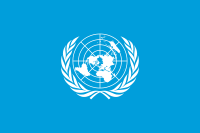
Photo from wikipedia
This paper briefly highlights key challenges faced in advancing women’s rights in the last two decades. It draws attention to ‘gains and gaps’ in the implementation of the UN Beijing… Click to show full abstract
This paper briefly highlights key challenges faced in advancing women’s rights in the last two decades. It draws attention to ‘gains and gaps’ in the implementation of the UN Beijing Platform for Action (1995) and the UN Millennium Development Goals (2000). It marks the evolution of a new compact on women’s human rights and gender equality through the Sustainable Development Goals (SDGs) that has been universally endorsed by governments, donors, women’s movements, civil society and other stakeholders. Women’s groups have consistently been raising critical questions of how equality, inclusion and participation would be embedded in a world structured around grave inequalities and exclusions. While the framework of the paper is global, it throws light on two critical areas in India—the economic empowerment of women and ending violence against women—with pointers regarding how these commitments could be better realised in the implementation of the SDGs, especially SDG Goal 5. The paper concludes by sharing information on how some countries are developing mechanisms to advance SDG 5 and draws attention to the lack of data and monitoring measures for gender equality. It emphasises that for transformative changes, governments need to engage with women’s organisations for policy development and implementation.
Journal Title: Indian Journal of Gender Studies
Year Published: 2018
Link to full text (if available)
Share on Social Media: Sign Up to like & get
recommendations!